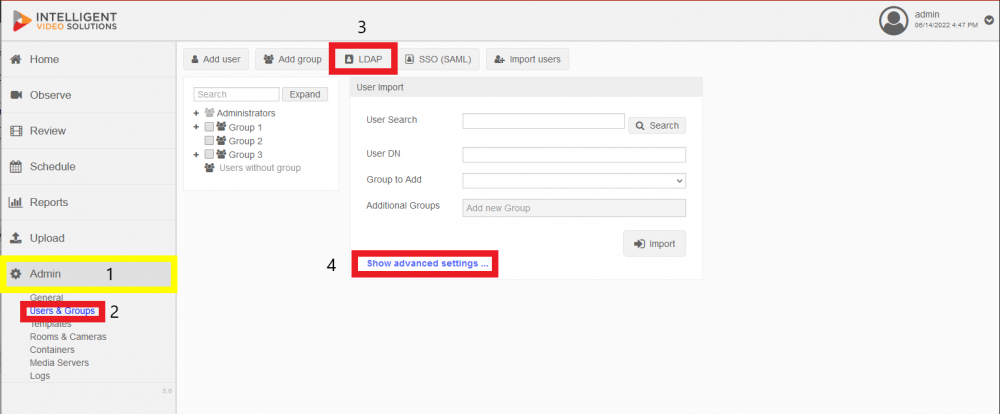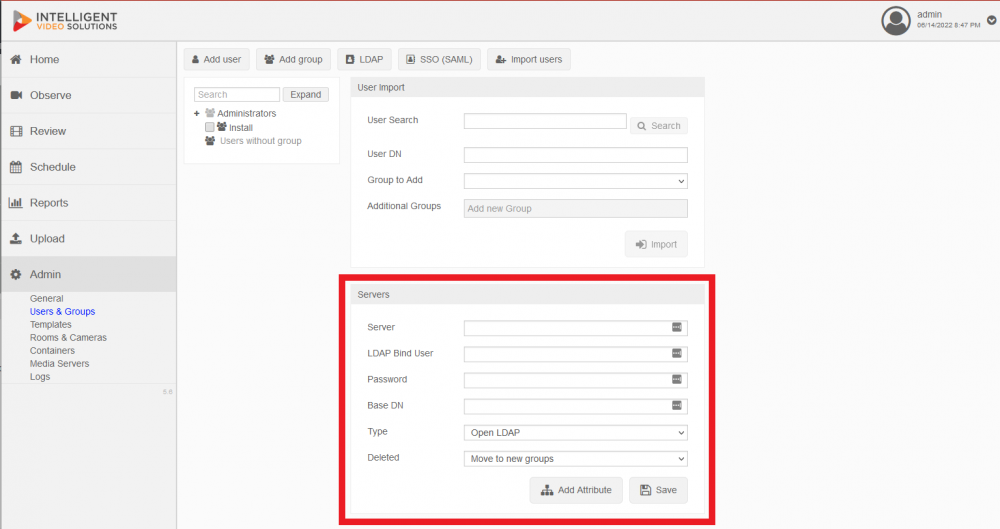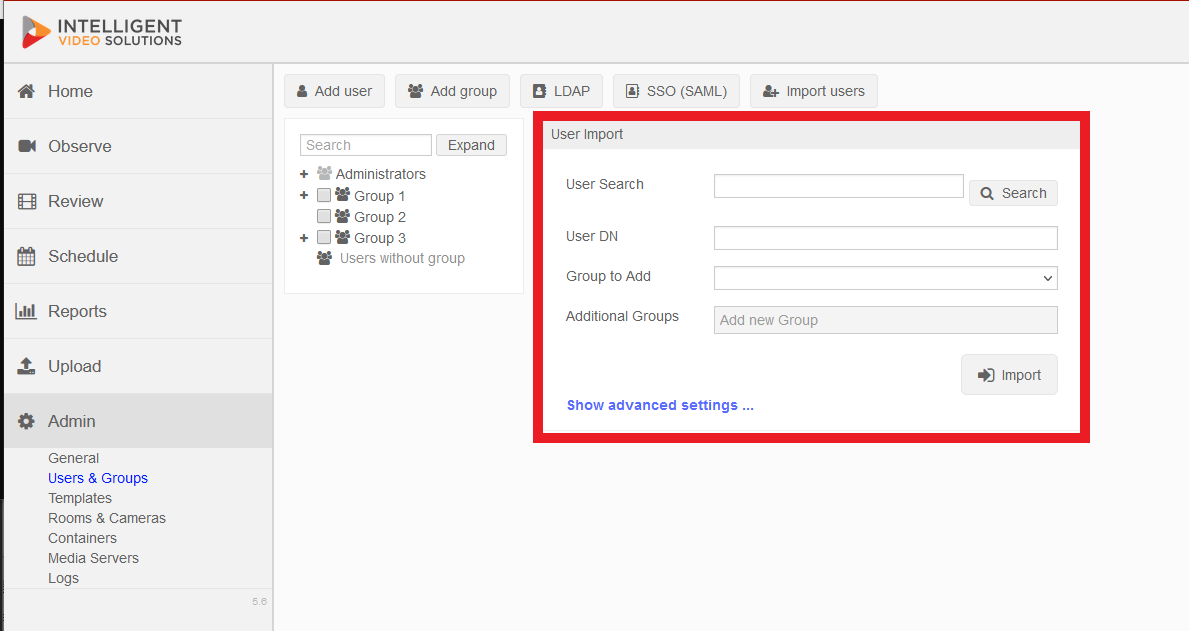Difference between revisions of "LDAP Configuration"
IVSWikiBlue (talk | contribs) (→Connecting to the LDAP Server) |
IVSWikiBlue (talk | contribs) |
||
| Line 15: | Line 15: | ||
</tr> | </tr> | ||
<tr> | <tr> | ||
| − | <td>'''A'''</td> | + | <td style="padding: 0 10px">'''A'''</td> |
| − | <td>Enter the IP Address or FQDN of your Active Directory or other LDAP compatible server in the Server field (Add Note) '''Note:''' If you are using LDAPS, enter the IP or FQDN as ldaps://192.168.0.10</td> | + | <td style="padding: 0 10px">Enter the IP Address or FQDN of your Active Directory or other LDAP compatible server in the Server field (Add Note) '''Note:''' If you are using LDAPS, enter the IP or FQDN as ldaps://192.168.0.10</td> |
</tr> | </tr> | ||
<tr> | <tr> | ||
| − | <td>'''B'''</td> | + | <td style="padding: 0 10px">'''B'''</td> |
| − | <td>Enter a Service Account user with read access in the LDAP Bind User field. (Add Note) '''The user must be entered as user@domain.com'''</td> | + | <td style="padding: 0 10px">Enter a Service Account user with read access in the LDAP Bind User field. (Add Note) '''The user must be entered as user@domain.com'''</td> |
</tr> | </tr> | ||
<tr> | <tr> | ||
| − | <td>'''C'''</td> | + | <td style="padding: 0 10px">'''C'''</td> |
| − | <td>Enter the Service Account password</td> | + | <td style="padding: 0 10px">Enter the Service Account password</td> |
</tr> | </tr> | ||
<tr> | <tr> | ||
| − | <td>'''D'''</td> | + | <td style="padding: 0 10px">'''D'''</td> |
| − | <td>Enter in the Base DN of the Service Account (Add note)</td> | + | <td style="padding: 0 10px">Enter in the Base DN of the Service Account (Add note)</td> |
</tr> | </tr> | ||
<tr> | <tr> | ||
| − | <td>'''E'''</td> | + | <td style="padding: 0 10px">'''E'''</td> |
| − | <td>Select either '''Active Directory''' or '''Open LDAP'''</td> | + | <td style="padding: 0 10px">Select either '''Active Directory''' or '''Open LDAP'''</td> |
</tr> | </tr> | ||
<tr> | <tr> | ||
| − | <td>'''F'''</td> | + | <td style="padding: 0 10px">'''F'''</td> |
| − | <td>Click '''Save'''</td> | + | <td style="padding: 0 10px">Click '''Save'''</td> |
</tr> | </tr> | ||
</table> | </table> | ||
Revision as of 08:17, 15 June 2022
Connecting to the LDAP Server
- Navigate to the VALT software either through the IP Address or the FQDN using Chrome, Firefox, or other standard web browser
- Log in using your login credentials
- - (Default credentials: Username = admin | Password = admin)
- Click on Admin -> Users & Groups -> LDAP -> Show Advanced Settings
- Scroll down to Servers
- Enter in your LDAP Server information
If the credentials were accepted and a connection was established, you will receive a message stating connected and you will see your LDAP Server in Green.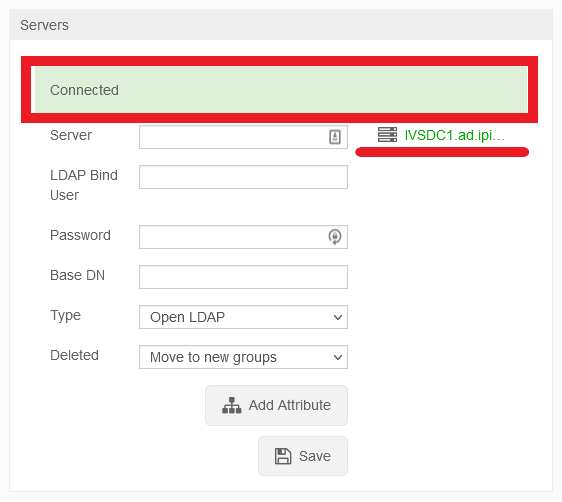
If the connection fails, you will receive an error message stating Wrong Credentials.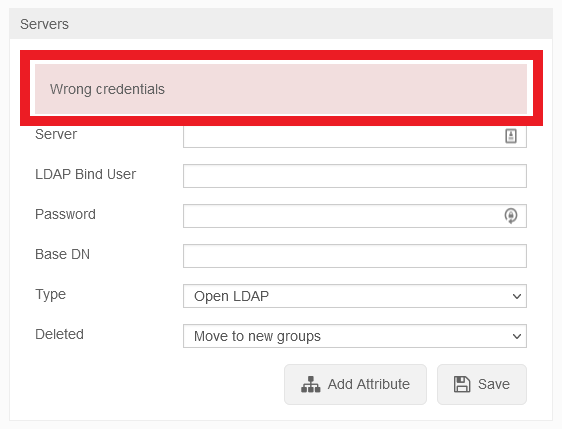
Syncing Security Groups
- Type a name into the LDAP Sync Schedules name field.
- In the Bind Script field, enter the DN for the security group without the DC components.
For Example: CN=VALT Users, CN=Users - Select a group the users should be added to. A group must be specified.
- Select a sync interval if you would like to automatically import new users added to the group.
- Click Save to save the sync schedule or Import to perform an import and save the schedule.
Importing an Individual User
- Type the distinguished name for the user into the LDAP field, omitting the DC components
- Example: CN=testuser,OU=Users
- Select a Group from the Group to Add field.
- Note: If you do not select a group, the user will still be important and must be assigned a group manually.
